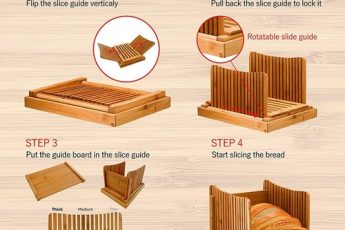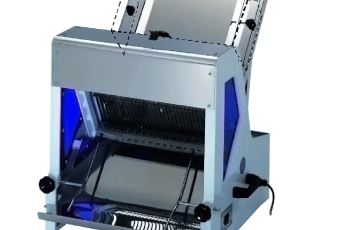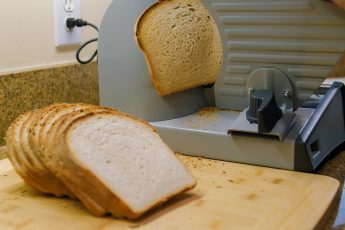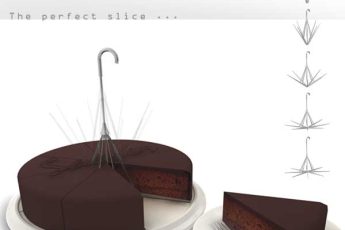4 Things to Consider When Buying the Best Bread Slicers

There are a lot of options out there when it comes to bread slicers, but what are the key considerations to make? Here are four things to consider: Materials, Controllability, Price, and Features. Here are a few examples of the types of slicers you can buy. Once you know what to look for, you can start shopping for the best bread slicers. If you’re looking for the best value for your money, you can get a three-in-one slicer or a single-serving one.
Features
Before buying a bread slicer, it is important to know how to make the best slices. To achieve the best results, the blades you choose should be suited for the type of bread you’re making. Blades are generally classified by pitch, which is the distance between the point where the teeth are positioned. Smaller pitch blades are better for traditional white bread, while thick, dense crusty breads should be cut with three-eighths or quarter-inch pitch blades. The 3/8th-inch-pitch blade is most versatile among different types of bread.
A basic bread slicer is an electric appliance that features a row of metal blades. The blades are designed to quickly slice bread, as well as other objects. These slicers are often partially serrated to minimize excessive pressure on soft breads, and to deliver uniform slices even at high speeds. In addition to their speed, they are made to accommodate a wide range of bread thicknesses. By ensuring even slices, bread slicers are essential kitchen tools.
Plastic bread slicers are a more affordable option than wooden ones, and many models are dishwasher-safe. However, they lack the designer curb appeal of wooden bread slicers. Unlike wooden bread slicers, plastic models tend to chip and splinter easily, so careful cleaning is essential. Plastic bread slicers may also not hold up to the sharpness of electric knives. For these reasons, bamboo bread slicers are an environmentally friendly option, but they are also more susceptible to splintering.
Commercial bread slicers come in two basic varieties: countertop and freestanding. Countertop models are generally smaller and intended for smaller operations. Electric bread slicers have the advantage of being easy to use and accessible. They automatically slice bread to the desired thickness. Some even slice and return to standby mode after slicing. These slicers also allow you to use them anywhere you want. They are highly versatile and efficient.
Materials
When you are buying a bread slicer, the materials used to make it are of the utmost importance. The materials should be durable enough to last for a long time. If the material is flimsy, it is best to avoid buying it. Some materials, however, are more durable than others. For example, the Eon Concepts bread slicer is made of ABS resin. Its materials are non-toxic and odorless. In addition, it has a non-slip base that makes it easy to grip. Besides, it can slice sandwiches and loaves as well.
Another type of material that is eco-friendly is bamboo wood. This material is safe for bakery bread and can be recycled and used for building materials. Moreover, wooden bread slicers are more durable than plastic and have a longer lifespan. This is a great option for anyone who is concerned about the environment. Regardless of which type of material you choose, a quality bread slicer will make the kitchen a healthier and safer place.
The mandolin-style bread slicers require more work. To slice a loaf properly, you need to rotate the loaf while using this tool. However, the clean-up after use is minimal with this type of bread slicer. Upright wooden slicers are easily wipeable, while plastic slicers can be cleaned under the tap. A spring-loaded folding system can break and cause the slicer to stop working. In such a case, you will have to contact the manufacturer to repair or replace it.
Bamboo is a natural material with antimicrobial and antibacterial properties. Bamboo slicers have antibacterial properties and won’t promote mold growth or cause damage to the bread. It also has a removable crumb catcher tray to catch crumbs as they fall from the slicer. Bamboo is also an eco-friendly material and is non-toxic. In addition to being eco-friendly, bamboo bread slicers are easy to store and clean.
The most common type of bread slicer is the single slicer. It comes in a variety of materials, including hard plastic, bamboo, and hardwood. It is usually made of a strong, non-hazardous material that’s sturdy and non-corrosive. The purpose of these slicers is to cut one single roll at a time. There are also models designed specifically for single rolls. In order to maximize the space in the kitchen, these slicers are typically made of plastic or bamboo.
Controllability
Whether you’re slicing bread for the restaurant next door or just for home use, the controllability of bread slicers is one of the most important factors for bakery operations. This factor depends on the type of bread you’ll be slicing and how many lines you have to operate. Here are some tips to help you select the right bread slicer for your kitchen. And as always, read reviews carefully before you buy.
Blades: Inaccurate alignment can cause crumbing and inconsistent cuts, so it’s important to choose a slicer that matches your product. For example, a double-blade system with Teflon blades can help prevent waste. The blades themselves must be sharp and easily removed, since they can clog. In addition, buildup on the blades creates extra friction, which can affect product quality and sanitation. Ultimately, this can affect your bottom line.
A bread slicer with adjustable controllability is the most reliable choice. It has an adjustable potentiometer that regulates the speed of the blade 70. When the switch 115 is turned on, the cooling fan motor 152 energizes and supplies cooling air to the slicer’s control 125. Moreover, an indicator 122 provides a red warning when the cover is not properly closed. By choosing a good bread slicer, you can rest assured that your bread slices will be perfectly cut and sliced without causing any harm.
In order to ensure precision and control, a microprocessor/stepper driver 130 responds to inputs and produces outputs that are relays, solenoid, and a stepper motor. The control program 200 sets the number of steps the stepper motor 104 takes, and the distance the belt 98 travels is controlled. The thickness of the bread slice is also controlled by a thumb wheel switch 114.
A variety of controls are available in bread slicers, ranging from 9.5 to 18 mm. You can also set the width of your slices, and adjust the speed while slicing. The blades in bread slicers can be easily changed. Some models have an open sided drum support to make maintenance easy. The top and bottom belts can be easily removed and replaced, making the maintenance process simpler and faster. Another option for controlling the speed of the slicer is an adjustable top and bottom belt. With this option, you can make adjustments to the slicer to get the perfect texture every time.
Price
Prices for bread slicers vary significantly. A high-quality commercial bread slicer can cost more than $50. Manual models are often more expensive than mechanized models, but a manual slicer’s durable hardwood construction and flexibility to cut varying-sized loaves are a good place to start. Look for features such as adjustable thickness and rubberized feet, which will keep the slicer from slipping when under pressure. The price range will also depend on what you need in a slicer, including whether it has a cutting surface or not. If you plan to use your bread slicer frequently, you may want to consider a model with a built-in tray to catch crumbs as you slice.
Plastic bread slicers are generally cheaper than wooden ones, and many are dishwasher safe, but are less durable. While they may not hold up to the constant use of an electric knife, plastic bread slicers are not as easy to clean as their wooden counterparts. Plastic slicers may splinter from repeated strikes with a sharp knife, so careful handling is recommended. You can also find bamboo bread slicers, which are environmentally-friendly and less expensive than hardwood.
The CUSIMAX slicing board features a belt and bearing system that keeps the blade from sliding. It has adjustable thickness settings, which let you choose from thin toaster-ready slices to thick wedges for recipes. The CUSIMAX slicer has a 200-watt motor. The CUSIMAX slicer is available in black or silver. It features a removable blade and can be cleaned in the dishwasher.
The Kitchen Seven bread slicer has an adjustable slot and is made of bamboo. This bread slicer is a good choice if you prefer a small table for your kitchen. It only works with skinny breads, though. And its knife slot is located at the end of the cutting tray. This bread slicer is a great investment. There are plenty of bread slicers on the market, but it’s a good idea to shop around. They’re affordable and will ensure perfect slices every time.
Electric bread slicers can cut more than just bread. Electric knives with a reciprocating blade work well for cutting bread and can be stored easily in a kitchen drawer. Choosing a bread slicer that is safe to use is also a good idea. Manual slicers can be dangerous to use, and electric ones are much safer. In addition to being more convenient, an electric bread slicer is also easier to clean. Unlike manual bread slicers, electric ones are made of stainless steel, which makes them safer to use.








